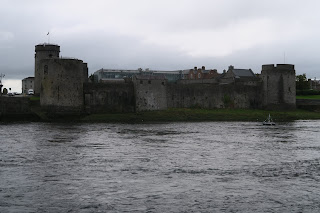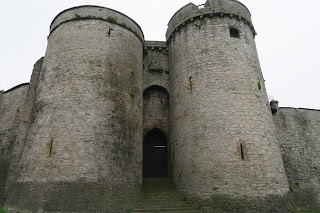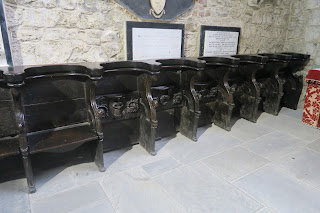Limerick City, in County Limerick, lies on the River Shannon and is the fourth most populous city in Ireland. Its compact old town is known for the medieval-era St. Mary’s Cathedral and St. John’s square, which is lined with Georgian townhouses. The 13th-century King John’s Castle is one of the city’s most recognizable sites. The city dates from 812 AD which is the earliest probably settlement; however, history suggests the presence of earlier settlements in the area.
Limerick is the setting for Frank McCourt’s memoir Angela’s Ashes and the film adaptation.
Thomson’s Bridge, over the River Shannon
The old walls around the original city
King John’s Castle is a 13th-century castle located next to the River Shannon. Although the site dates back to 922 when the Vikings lived in the area, the castle itself was built on the orders of King John in 1200. It is one of the best preserved Norman castles in Europe, with the walls, towers and fortifications remaining today.
The Bishop’s Palace is adjacent to King John’s Castle. It is the restored home of former Protestant Bishops of Limerick
The Cathedral Church of St. Mary was founded in 1168 AD and has been a house of prayer for around 850 years. It is the oldest building in Limerick which is still in daily use - each day there is at least one service of worship.
The great west door is Romanesque in style and elaborately carved. Above it is the 120 foot tower which is unusual as cathedrals of this age would tend to place the tower more centrally in the building.
The oldest part of the graveyard around St. Mary’s Cathedral dates from the 12th century
One of the most famous features in St. Mary’s Cathedral are the carved misericords. These misericords are unique in Ireland and are the only surviving pre-Elizabethan carvings. They probably date from 1480-1500. In the early church, priests stood for the service, sitting was prohibited. The lip on the edge of each of these seats allowed the clergy to rest while the seats were tipped up, so that they appeared to be standing but were allowed to sit in act of mercy - hence misericords. Of the 21 carvings, 16 are different, with medieval emblems such as a two-legged one-horned goat, a griffin, a sphinx, a wild boar, an angel, a head resembling Henry IV, a dragon biting its tail, antelopes with inter-twined necks, a swan, an eagle, the Lion of Judah with a dragon, as well as a human head wearing a ‘chaperon’, a cockatrice or two-headed lizard holding its tail, and a wyvern or two-legged dragon biting its tail.
The ruins of Adare Castle, dating from around 1200.
The entrance into the Adare Golf Club which is housed within the vast and serene grounds of Adare Manor
Holy Trinity Abbey Church (Adare). It is believed the original church was built between 1230 and 1240 and sections of this original building still stand today, incorporated into the present-day church
And these are the thatched cottages which Adare is famous for. They really are quite beautiful!





































No comments:
Post a Comment